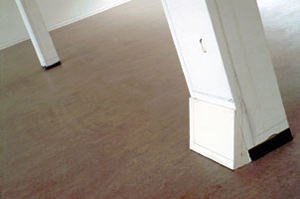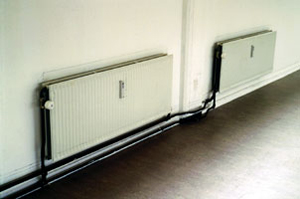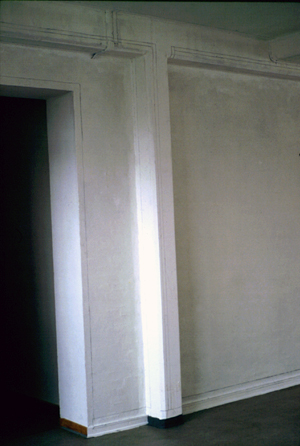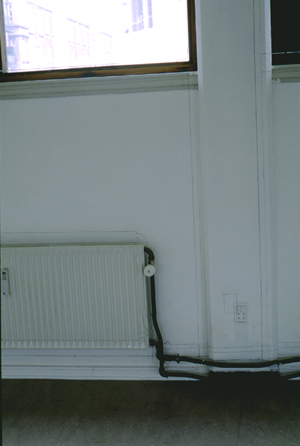| Katya Sander | e@katyasander.net |
| Double Feature 1995 erased pencil drawing in empty room In Double Feature (with Andrea Creutz and Gunvor Vibe-Pedersen), Globes’ Space, Copenhagen, 1995  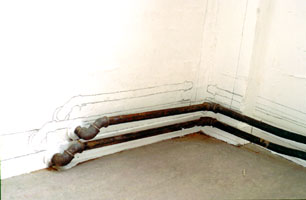 In the project ‘Double Feature’, an enormous pencil drawing of a room was created and then erased inside the room depicted in the drawing at the size of the actual room. The architectural features of an empty room – its ornaments, installations and structural elements – were carefully drawn at a scale of 1:1, displaced five centimeters from the ‘original’. The room was not only depicted, but also literally copied and recreated in, as well as on, itself. Both the ‘original’ – the model for the drawing – and its plotting pad were one and the same space. The project investigated spatial questions common to the three artists: our colonization and occupation of the room – as well as our simultaneous representation of it – working and exhibiting inside it. The thin lines of the drawing – invisible from a distance – described a space that was not immediately recognizable or understandable because the drawing’s perspective was consistently disrupted by the three-dimensional room it depicted. The space of the drawing could only be captured mentally, through a close reading, forcing the visitor to physically follow the drawn lines along the actual walls. In fact, entering the room many people did not see anything at all and turned around to leave. Only then did they notice the thin lines drawn around the door. Casually, more or less unconsciously, these unsuspecting visitors followed the faint lines until they discovered the expansive net of the drawing encompassing the room – a visual echo and distortion of the space in which s/he was standing.
Though the drawing was executed as an exact copy of the room, it became something other than a simple copy. The five centimeter offset not only displaced, but also distorted the ‘second’ – drawn – room, never quite matching the ‘first’ – the ‘original’, actual space. Straight lines often curled into real corners or became compressed under actual details, distorted and twisted by uneven and irregular surfaces. Conversely the depiction of some uneven details fell on perfectly even parts of the space.
|
